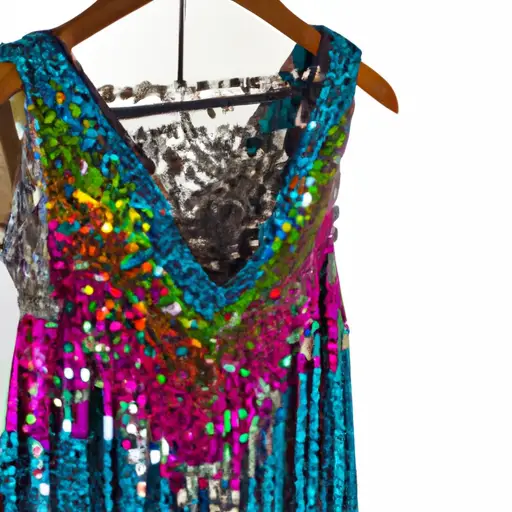Shopping Sustainably Tips and Tricks
Greetings, fellow sustainable shoppers!
Let’s talk about something that’s been on my mind recently – sustainable shopping. Nowadays, it’s not just about buying things we need – it’s about being mindful of our impact on the environment and making choices that reflect our values. Sustainable shopping is all about finding products that are eco-friendly, cruelty-free, and made ethically. It’s something I’m passionate about, and I’m excited to share with you some tips and tricks that I’ve learned along the way.
Identifying Sustainable Brands: Ain’t No Greenwashing Here!
I know it can be tough to navigate all the buzzwords and claims on labels, but identifying sustainable brands is an essential step in sustainable shopping. One thing that helped me is doing some research on the material sources a brand uses. If a brand uses sustainable and eco-friendly materials, chances are high that they are taking responsible steps towards sustainability.
Besides researching material sources, it’s also crucial to look into a brand’s ethical practices. Some of the ethical factors you may want to consider are fair labor, animal testing, human rights, and carbon footprint. Do their production and supply chain keep these concerns in mind? Remember to take these claims with a grain of salt and dig deep to avoid greenwashing.
If you need a starting point for your research, this post by Leah is a great resource to learn about the most sustainable and ethical brands out there.
Shopping Sustainably In-Store: My Top Tips
When it comes to sustainable shopping, browsing the racks in-store is a great way to find eco-friendly options. Not only can you touch and feel the materials, but you can also examine the products for any green credentials. Here are my top tips for shopping sustainably in-store.
Choosing Long-Lasting Products
One of the keys to sustainable shopping is investing in products that are built to last. When browsing in-store, make sure to look for high-quality materials like organic cotton, linen, or silk. These fabrics are more durable than synthetic materials and will last for many wears and washes. Additionally, examine the construction of the garment to ensure that it is well-made and won’t fall apart after a few wears.

Another way to shop sustainably in-store is to look for products that have recyclable components. Some labels will indicate that the garment is made from recycled materials, but you may also want to look for pieces that can be repurposed or recycled when they no longer serve their original purpose. For example, a dress may be made from a fabric that can be recycled into a new item, or a t-shirt could be repurposed into a cleaning rag when it’s no longer in use.
By following these tips, you can make sure that your in-store purchases are sustainable and contribute to a more environmentally-friendly world.
Shop Sustainably Online: Thrifting and Supporting Ethical Businesses
Online shopping can be a convenient and sustainable way to shop if you know what to look for. One option is buying secondhand items from websites like ThredUp or Poshmark. This not only saves materials from being wasted but also provides an affordable way to update your wardrobe. Plus, thrifting gives you a unique style and reduces the demand for fast fashion.
Another option is supporting ethical businesses and brands. Look out for companies that prioritize sustainable and ethical practices. Check out their websites to see if they have any commitments to social or environmental causes. Read reviews or ask around on social media to see if any of your friends or followers have experience with the brand. This way, you can not only feel good about your purchase but also actively support companies that are making a positive impact.
Remember that you should still focus on quality and longevity when shopping online. Make sure you are buying items that will last and won’t need to be replaced after a few uses. Check the materials and read the reviews to see if the item is up to your standards. Additionally, try to avoid buying unnecessary items or overindulging in fast fashion just because it’s cheap and convenient.
Lastly, don’t be afraid to reach out to companies with questions about their sustainability and ethical practices. If you can’t find the information you need on their website, send them an email or message on social media. This shows that customers care about sustainable practices and also provides feedback to the company on what their customers are looking for.
Conclusion: Are You Ready to Be A Sustainable Shopper?
So that’s it, folks! We’ve gone through the definition of sustainable shopping and the benefits it brings. It’s clear that our purchasing decisions have long-term effects on the environment, and being mindful of them cannot be ignored.
If you’re willing to put in the effort, identifying sustainable brands can be a fruitful endeavor. Before you make a purchase, it’s essential to research material sources and ethical practices to ensure that the product aligns with your values.
Shopping sustainably in-store can involve choosing long-lasting and recyclable products. Examining labels for recyclable components is critical to ensure that you won’t contribute to waste.
When it comes to shopping online, there are even more ways to be sustainable, such as buying secondhand and supporting responsible businesses. For example, consider purchasing items from online thrift stores or businesses that have sustainable policies in place.
In conclusion, making better choices as a consumer can contribute to a better future for our planet. Remember that every decision counts, no matter how small. So take the first step today and be a part of the positive change we need!






